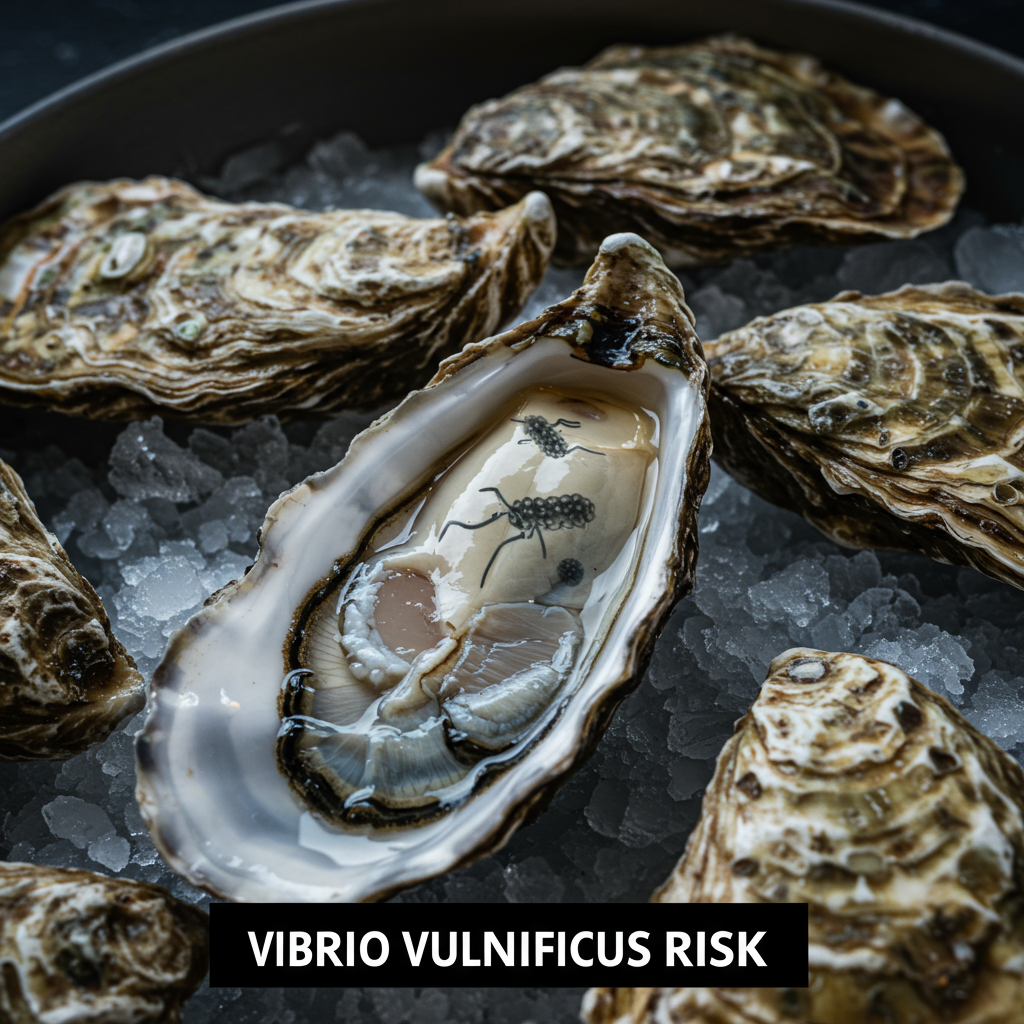Recent tragic deaths linked to raw oyster consumption are sparking urgent public health warnings. Individuals contracted Vibrio vulnificus, a severe “flesh-eating bacteria,” after eating contaminated shellfish. This alarming trend underscores the critical importance of understanding Vibrio vulnificus risks, especially from raw oysters. Awareness of this bacteria and practicing robust seafood safety measures are now more vital than ever.
Unveiling the Hidden Danger: Vibrio Vulnificus and Raw Oysters
Two individuals recently died after contracting Vibrio vulnificus from eating raw oysters. One victim was a Louisiana resident; the other was from out-of-state. These deaths highlight a growing concern across the Gulf Coast and beyond. Health officials confirmed that contaminated oysters, harvested in Louisiana, were consumed at different restaurants.
Vibrio vulnificus infections predominantly occur through two main routes. The first is consuming raw or undercooked seafood, with oysters being particularly risky. The second involves exposing open wounds to contaminated coastal or brackish waters. This dangerous bacterium, often called “flesh-eating bacteria,” can lead to life-threatening conditions.
What is Vibrio Vulnificus? A Closer Look at the Bacteria
Vibrio vulnificus is a naturally occurring bacterium. It thrives in warm coastal and brackish waters, where fresh and saltwater mix. Its prevalence is highest between May and October. The Gulf Coast provides ideal conditions for its proliferation, with an optimal balance of salt and heat.
Initial symptoms of a Vibrio vulnificus infection can include fever and chills. Patients may also experience severe vomiting and diarrhea. In more serious cases, the bacteria can cause septic shock and distinctive large, blistering skin lesions. The infection can lead to necrotizing fasciitis, which is a severe soft tissue infection. Many infected individuals require intensive care, and some even face limb amputation. The fatality rate is alarmingly high. Approximately one in five people infected with Vibrio vulnificus die. Tragically, death can occur within just one or two days of illness onset.
A Disturbing Trend: Rising Infections and Geographic Spread
Louisiana has experienced a significant increase in Vibrio vulnificus cases and fatalities this year. So far, 22 Louisiana residents have required hospitalization due to the infection. A total of four deaths have been reported within the state. Two of these deaths were directly linked to consuming raw oysters. This represents a stark increase from the previous decade. Over the last ten years, Louisiana averaged only seven cases and one death annually. Health officials have described the current situation as “prolific.”
The concern extends beyond Louisiana. Florida’s Health Department has also reported a significant number of cases. This year, Florida recorded 23 Vibrio vulnificus cases, resulting in five deaths. This broader regional trend highlights a serious public health challenge. The geographic range of Vibrio vulnificus is also expanding. Cases have now been reported in states as far north as Massachusetts, Connecticut, and New York. From 1988 to 2018, the East Coast saw a dramatic 800% increase in cases.
Climate Change’s Role in Vibrio Vulnificus Proliferation
Experts are linking the rising incidence and spread of Vibrio vulnificus to climate change. Warmer ocean temperatures create a more hospitable environment for the bacteria to thrive. A 2023 study suggests that the northernmost Vibrio vulnificus infections are shifting northward. This shift is occurring at approximately 30 miles each year. This expansion directly contributes to the overall increase in reported cases. Understanding this environmental link is crucial for proactive public health strategies.
Protecting Yourself: Essential Seafood Safety Tips
Preventing Vibrio vulnificus infection is paramount. The most effective way to avoid food poisoning from this bacteria is to avoid eating raw shellfish. This recommendation is especially critical for certain vulnerable groups. Individuals who are immunocompromised or have chronic liver disease face severe risks. For them, consuming raw seafood can lead to fatal outcomes.
If you choose to eat shellfish, ensure it is cooked thoroughly. For example, steam oysters until their shells open wide. Ensure any shellfish consumed has been sourced hygienically. It should also not be left out for extended periods. Beyond food, protect any open wounds. Avoid exposing them to coastal or brackish waters. If exposure occurs, clean the wound meticulously and thoroughly. While Vibrio vulnificus infections are rare, practicing these seafood safety precautions significantly reduces risk.
When to Seek Medical Attention
Rapid action is vital if you suspect a Vibrio vulnificus infection. Seek urgent medical care immediately if symptoms develop after eating raw seafood. Also seek care if you have an open wound exposed to coastal waters. Symptoms can progress very quickly. Inform your healthcare provider about any recent raw seafood consumption or water exposure. Diagnosing the infection involves testing cultures from stool, wounds, or blood samples. Treatment for mild cases often includes increasing fluid intake to prevent dehydration. However, severe or prolonged infections require antibiotics. In cases of infected wounds, surgery may be necessary to remove dead tissue. Early intervention can greatly improve survival rates.
Frequently Asked Questions
What is Vibrio vulnificus and how does it spread?
Vibrio vulnificus is a naturally occurring bacterium found in warm coastal and brackish waters. It thrives particularly between May and October. Humans typically contract this infection in two primary ways. First, by consuming raw or undercooked seafood, especially oysters. Second, by exposing open wounds to contaminated coastal waters. The bacteria can then enter the bloodstream, causing severe illness.
Which populations are most at risk from Vibrio vulnificus?
While healthy individuals usually experience only mild symptoms, certain groups face severe and potentially fatal outcomes. Those most at risk include individuals who are immunocompromised, such as cancer patients or those with weakened immune systems. People with chronic liver disease are also highly vulnerable. The elderly, or anyone with pre-existing health conditions, should exercise extreme caution.
What immediate steps should I take if I suspect a Vibrio vulnificus infection?
If you suspect a Vibrio vulnificus infection, seek emergency medical care immediately. This is crucial due to the rapid progression of the illness. Inform your doctor about any recent consumption of raw shellfish or exposure of open wounds to coastal waters. Early diagnosis through cultures and prompt treatment with antibiotics, and potentially surgery, are critical for improving your chances of survival.
Staying Informed and Safe: A Proactive Approach to Seafood Enjoyment
The recent fatalities linked to Vibrio vulnificus from raw oysters are a sobering reminder. Vigilance and adherence to seafood safety guidelines are essential. While enjoying shellfish, always prioritize thorough cooking and responsible sourcing. Be aware of the risks, particularly if you belong to a vulnerable population. This bacterium thrives in warmer waters. Climate change may continue to expand its geographic reach. Staying informed about public health advisories empowers you to make safe choices. Protect yourself and your loved ones through proactive awareness and caution.



